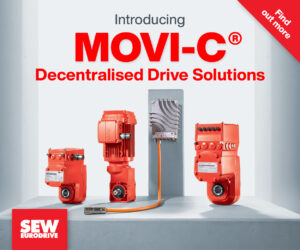Malaysian jungle to future made in Australia – By Grant Wild

Manufacturing has been lost in Australia and we are turning our attention to building it anew. We have to look away from the past, to new ways of manufacturing and a digital-first mentality and automation. By Grant Wild.
The recent deliverables in the Federal budget have made me think hard about what we really need to do to achieve our ambitions for a world-beating manufacturing sector.
For me, lessons for this future began a decade ago driving through a Malaysian jungle.
My company was doing an implementation for a business that did industrial shelving for business clients.
Heading to the plant where the product was made, I expected a pretty basic space with a lot of workers working with minimal technology.
Instead, I saw dozens of CNC-automated machines and robotics, whirring away in the middle of a jungle two hours away from Kuala Lumpur.
You might have expected that Malaysia with its lower-cost labour would have gone the human heavy route for manufacturing, instead they chose to automate.
Thinking back on it, I can’t help but ask: if a developing nation that could easily have chosen a maximalist solution to building an industry instead took a different approach, why shouldn’t we?
With the $1 billion committed by the government to the establishment of a homegrown solar panel industry has come an understandably ambitious call to build the entire kit up locally.
The appeal is understandable since we arguably invented the core technology in solar panels, but this isn’t a good enough reason to jump into wholesale solar panel manufacturing.
It’s not just their headstart or headcount that we have to worry about.
With solar panels, Australia is also wading into an already heavily commoditised industry with precious little distinction between one solar panel over another.
Their metrics are uniform, and while there are slight variations within the inverters, they’re all commercialised, and they all do the same thing.
Distinguishing one’s product in this market will be a challenge, one that will leave very little margin for error.
That $1 billion budget can only buy us so much, and pales in comparison to the $1 trillion the US is spending on its own renewable energy projects through its massive (and, arguably, massively profligate) Inflation Reduction Act initiative.
Moreover, dangling money in front of businesses and labour in the form of subsidies creates perverse incentives. My own consultancy, for instance, worked on what we initially thought was a manufacturing system but was actually a government subsidy-seeking machine (yes, I’m speaking about our ill-fated auto industry).
Subsidies like this end up driving inefficiencies which Australia can ill afford.
A ‘Spray and pray’ approach, if you will, that only leads to wasted opportunities. No one should be building something that doesn’t actually meet a real-world need.
Thankfully, models that take better advantage of Australia’s core strengths and unique resources do exist.
We have land and sun, which suggests an ideal opportunity to transform into a Saudi Arabia of renewable energy.
On a manufacturing level, we can learn much from the concept of the Mittelstand, a category of small to medium-sized businesses based largely in Germany, Austria and Switzerland, often family-owned and centuries-old, which have managed to master their own individual niches even as they continually innovate within them.
Australia and New Zealand is already replete with similar examples, one being Hartford Engineering.
Once they recognised their core business of manufacturing buckets and pivots for tractors would be commoditised, they set out to solve a nagging problem in their industry.
Digging holes occasionally requires the removal and swapping of certain bucket sizes, an often difficult and cumbersome affair.
Their mechanism for streamlining this process, called ‘quick hitches’, are now exported to clients in America.
Rather than attempting to reinvent the wheel, or solar panel, it would benefit Australia to take a full inventory of what it can do best and how it can ultimately improve on the designs of the renewable energy market it wishes to enter.
Then we need to pair this approach with a digital-first mentality that sees the automation, virtualisation and technological optimisation of whatever manufacturing paths we take.
It’s in the specialised design, rather than the commoditisation, where real value is created and the money is to be made.
Should it take, we could see our very own renewable Mittelstands extend a legacy for generations into an abundant and carbon-free future.
Grant Wild is the CEO and Managing Director of government and private sector IT company Wild Tech. He has a deep background in ERP and manufacturing. He previously held executive and management roles at the University of Technology Sydney (UTS), ASG and Brightside.
Picture: Grant Wild
@aumanufacturing Sections
Analysis and Commentary Awards Defence Manufacturing News Podcast Technology Videos









